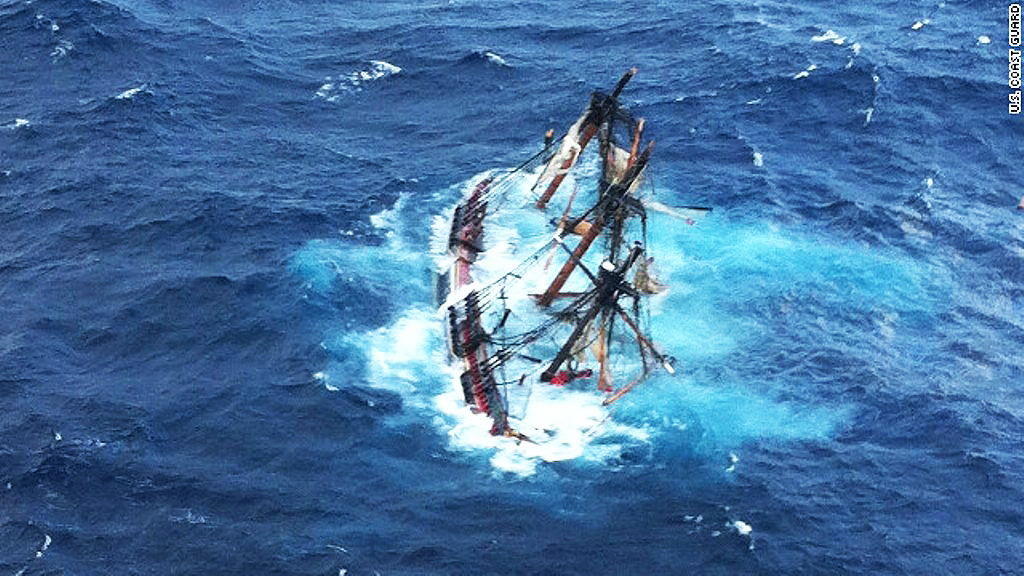
By US Coast Guard [Public domain], via Wikimedia Commons
She sank in the seas off North Carolina, en route to St. Petersburg, Florida from Boothbay Harbor, Maine. Captain Robin Walbridge was aware of Sandy before he left port. He decided to sail into the storm. Two lives were lost, Walbridge, and novice deckhand Claudene Christian. A heroic U.S. Coast Guard team risked their lives rescuing the remaining 14 crew from Sandy’s violence.
Built as a replica of the original HMS Bounty for the 1962 movie Mutiny on the Bounty, she was the most famous tall ship in the world. Consequently, there has been worldwide debate, particularly online, about the actions of the captain, the condition of the vessel, and the degree of experience of her crew. The report of the Coast Guard inquiry into the sinking is near completion. Findings are expected soon.
Sandy reminds us still that there are few places more lonely and few feelings more powerless than in harm’s way at nature’s command. And for those of us who spend time on the water, whether inland estuary or blue ocean, the sinking of a ship pulls us into an even more desolate place we rather not feel.
The Last Voyage of the Bounty, a special report by the Tampa Bay Times, will take you there as well. It is a riveting account of the events leading up to and following the sinking. It is also great online reporting. It includes links to an interactive diagram of the ship, author’s notes, details about sources, and more.
Here begins the story by reporter Michael Kruse, followed by a link to the Tampa Bay Times special report:
In the dark, in the wet, whirling roar of Hurricane Sandy, on a ship tipping so badly the deck felt like a steep, slick roof, the desperate, damaged sailor searched for a spot from which to jump. Close to the stern, he gripped the helm, now all but touching the water’s high black churn. He let go and paddled and kicked in the buoyant but clumsy blood-orange suit he had wiggled into not long before. The ship spat up a heavy wooden grating, and it landed on his head. Crack. His adrenaline surged. He thrashed, straining to get away from the heaving ship, her three masts of tree trunk heft rearing up and slamming down like lethal mallets, her thinner, sharper spars piercing the surface like darts, the ropes of the rigging like tentacles, grabbing, yanking. Pfffffft. The tip of a spar sliced down, catching the sailor, pushing him below. He gasped, choking on water, struggling back to where there was air.
His focus narrowed.
Next breath.
Breathe.
He kept swimming away, and finally Adam Prokosch was clear of the ship, away from his home of the last eight months, away from his 15 fellow crew members who felt like family, no longer together, now all alone, in the middle of the deafening noise, the needles of rain, the frothing, cresting waves.
He couldn’t see the captain who had decided to sail toward the storm. He couldn’t see the first mate get bashed by a spar. He couldn’t see his good friend get tangled and wrenched so far under he started saying sorry to his mother. He couldn’t hear the voice of the woman shrieking she was stuck.
Up in the sky, 500 feet high and 90 miles from shore, under the menace of the thick swirl of clouds in the early morning of Oct. 29, 2012, the men in a Coast Guard C-130 airplane made radio calls, repeating the name of the ship, hoping her crew could hear.
… Bounty …
… Bounty …
… Bounty …









